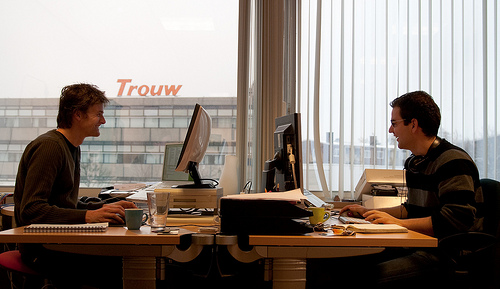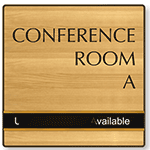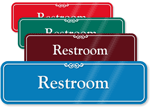Is your open-plan office hurting your health?
Set aside the hand sanitizer for a moment: though prevailing office etiquette suggests sniffly coworkers are the greatest germ-carrying risk, a recent study out of Sweden finds that office design and layout has an unexpected

Turns out, your cubicle could be hurting your health. From Hey Paul Studios.
relationship to employee sick time. As EHS Today reports, the study, titled “Office Design’s Impact on Sick Leave Rates,” considered almost 2,000 employees working in a variety of environments, and was carried out by a team of four Stockholm University scientists.
The study analyzed data from employees in seven different office environments, including: “single-room office; shared-room office (2-3 workers in the room); small, open-plan office (4-9 workers); medium-sized, open-plan office (10-24 workers); large, open-plan office (more than 24 workers); flex-office (no individual workspaces); and combi-office (less than 20 percent of the workforce is not at individual workstations, team-based work structure).”
The study also accounted for the number of employee short-term and long-term illnesses, and employee total sick day counts per year. It found that there was a “significant excess risk” of short-term employee sick absences in three kinds of open-plan offices. The rate was especially high among women. Additionally, it found that in flex-offices — those open-plan offices that have some conference rooms but no individual work stations — there was a higher likelihood of short-term sick absences and a larger figure of sick days among men.
“Traditional, open-plan offices” are less beneficial to employee health, according to the study. But why? Open-plan offices don’t simply encourage the spread of germs. They also contribute to environmental stresses, such as exposure to “irrelevant sound,” a lack of “visual privacy,” and “a reduced ability to control personal space.”
Plus, the kind of work performed in open-plan offices, as well as group dynamics, can also affect the number of sick days. Group dynamics, reports EHS Today, especially impact sick leave in smaller offices, such as via “presenteesim,” a term describing the act of coming to work despite illness.

Open-plan offices facilitate the spread of germs, in addition to the spread of ideas. From Alper Çuğun.
As for the healthiest office designs and layouts, the study found that flex-offices and single offices were ideal. “Differences in health status between employees in various office types have been found, with the best health among those in flex-offices and [single] offices, and the worst in medium-sized, open-plan offices,” according to the researchers. “The explanation for the equally good health in the former two – very different – office types could be that they both enable personal control, albeit through different means.”
Office environment, layout and design are significant to employee health for a variety of reasons, according to the researchers. The top reasons: 1) Personal control over one’s own environment is a “fundamental” human desire; 2) Privacy is important to employees; 3) Noise and other distractions can contribute to absenteeism.
Yet there is much left to be studied. While there is already a significant amount of research on the effects of work absenteeism, the study’s researchers noted a lack of analysis on white-collar worker absenteeism, though this group comprises the majority of the Western workforce.
Category: New Products, Office courtesy
















